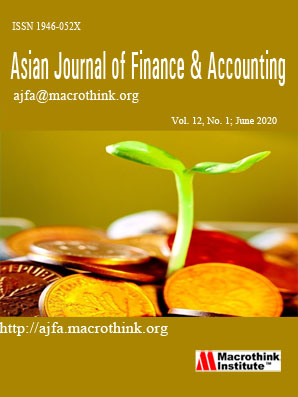Is EVA a Superior Measure of Shareholder Value? Evidence from CNX Nifty Constituent Firms
Abstract
Business organisations are under pressure to device measures to increase shareholder value, improve financial performance and incentivize compensation plans that motivates and encourages managers to increase shareholders wealth and contribute towards business growth. A recent innovative trade-marked version of residual income measure known as economic value-added (EVA) is being experimented and implemented in many organisations. This paper attempts to empirically test if any residual income components such as Net Operating Profit after Tax (NOPAT), Return on Net Assets (RONA) and cash flow measure i.e., Free Cash Flow(FCF), the predictor variables, together variable wise and year wise from 2009 to 2012 has any influence on Economic Value Added (EVA), the criterion variable in the study. To examine the influence of the said variables data of 16 sample companies from CNX IT index has been taken and required financial information was sourced from CMIE’s Capitaline database. The descriptive statistics, correlation and multiple regression analysis has been performed using SPSS 20.0 version through ENTER method and STEPWISE method for every year across the sample companies. Statistical results prove that NOPAT has highest influence on EVA throughout the study period compared to other variables. Also compounded annual growth rate (CAGR) of EVA and year on year growth rate (YoYGR) of all variables has been computed.
Submission of an article implies that the work described has not been published previously (except in the form of an abstract or as part of a published lecture or academic thesis), that it is not under consideration for publication elsewhere, that its publication is approved by all authors and tacitly or explicitly by the responsible authorities where the work was carried out, and that, if accepted, will not be published elsewhere in the same form, in English or in any other language, without the written consent of the Publisher. The Editors reserve the right to edit or otherwise alter all contributions, but authors will receive proofs for approval before publication.
Copyrights for articles published in MTI journals are retained by the authors, with first publication rights granted to the journal. The journal/publisher is not responsible for subsequent uses of the work. It is the author's responsibility to bring an infringement action if so desired by the author.








